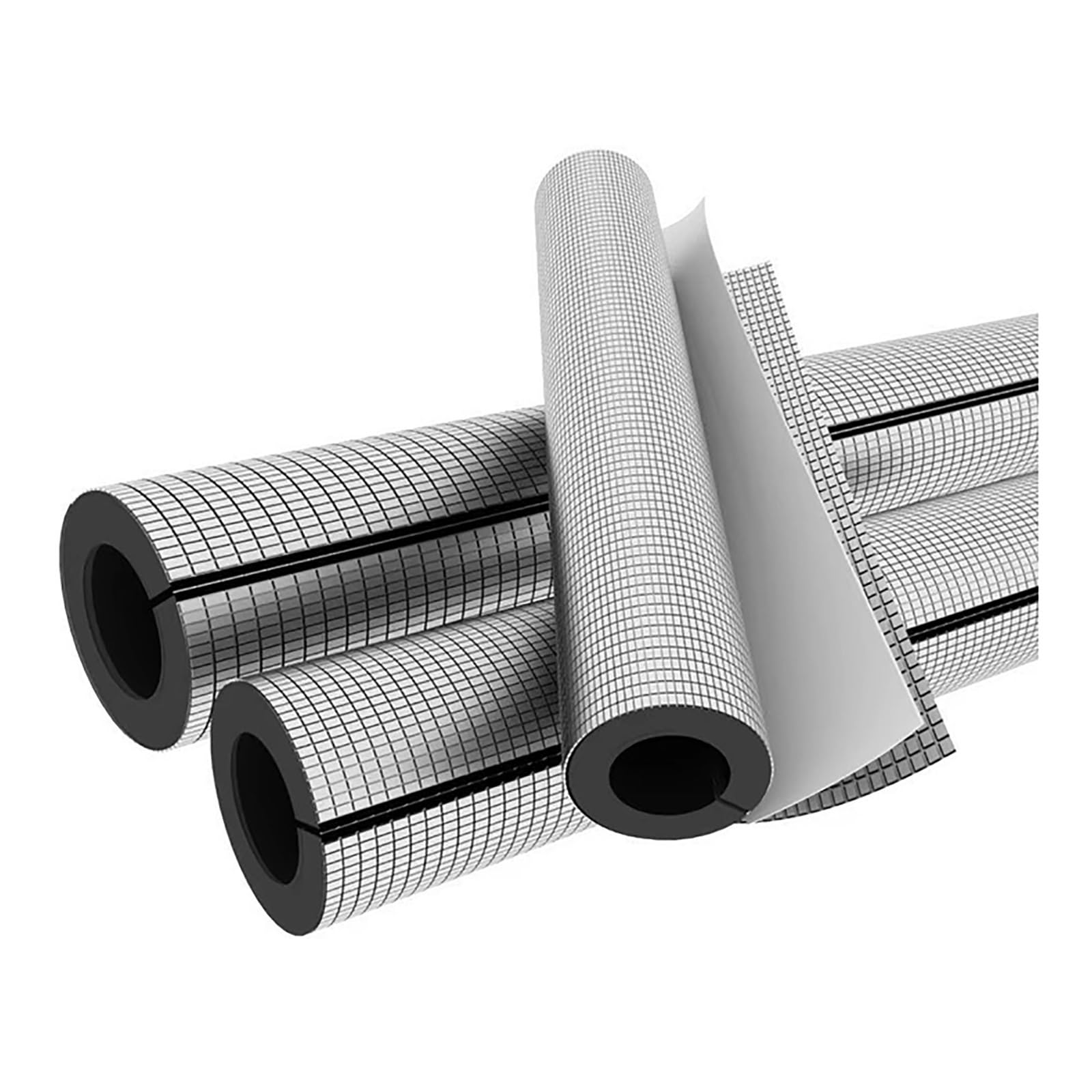When it comes to selecting outdoor pipe insulation foam, understanding the different types and their specific applications is essential. Outdoor environments present unique challenges compared to indoor settings, requiring more thoughtful consideration in the selection process. Outdoor pipe insulation must not only address the basic need for thermal protection but also withstand a variety of environmental stressors, such as extreme temperatures, UV radiation, and moisture. This detailed overview will help you clarify the different types of outdoor pipe insulation foam, highlighting their characteristics and applications to guide you in making an informed decision.
Here is a short interview:
- Rubber Foam: Best for extreme temperatures and harsh conditions, offering excellent durability and UV resistance.
- Polyethylene Foam: Economical and effective for general use, with good moisture resistance and ease of installation.
- Polyurethane Foam: Ideal for high-efficiency insulation needs, with superior thermal insulation and water resistance.
- Mineral Wool: Provides excellent fire resistance and thermal insulation, suitable for high-temperature and fire-sensitive applications.
- EPE Foam: Offers pressure resistance and flexibility, making it suitable for various pipe systems.

Table of Contents
Rubber Foam
Characteristics
Rubber foam insulation is exceptionally durable and designed to perform across a large range of temperatures, from frigid cold to sweltering heat. Its resistance to ultraviolet (UV) radiation prevents degradation from prolonged sun exposure, preserving its insulation properties over time. Additionally, rubber foam is highly flexible, which makes it convenient to install around pipes of various shapes and sizes. Its resistance to ozone and weathering further enhances its suitability for outdoor applications, where environmental exposure can accelerate wear and tear.
Applications
Rubber foam is ideal for use in industrial piping systems where exposure to extreme temperatures and harsh conditions is common. It’s also used in HVAC systems to maintain energy efficiency despite external weather changes. For refrigeration systems that operate outdoors, rubber foam’s excellent thermal insulation and UV resistance ensure that temperature-sensitive fluids remain at the desired temperatures. Its durability makes it a reliable choice for any outdoor application where long-term performance is crucial, especially in challenging environments.

Polyethylene Foam
Characteristics
Polyethylene foam is a cost-effective and lightweight insulation material that excels in thermal insulation. It helps minimize heat loss by providing a barrier to thermal energy transfer. The foam’s closed-cell structure enhances its moisture resistance, preventing water from penetrating and compromising the insulation. Polyethylene foam is also highly flexible, which simplifies the installation process around pipes and fittings. Its resistance to chemicals and ease of cutting and shaping make it a versatile choice for various applications, ensuring effective performance even in challenging environments.
Applications
Polyethylene foam is a kinds of outdoor pipe insulation foam, often used for residential pipe insulation, where its affordability and reliable performance are advantageous. It is suitable for commercial applications where moderate insulation requirements are present, such as in office buildings and retail spaces. This material is also effective in protecting pipes in outdoor environments where moderate temperature fluctuations occur. Its ease of installation and cost-efficiency make it a popular choice for standard insulation needs, providing a good balance between performance and budget.

Polyurethane Foam
Characteristics
Polyurethane foam offers superior thermal insulation with a very low thermal conductivity, significantly reducing heat loss and improving energy efficiency. This material’s high resistance to water and moisture makes it ideal for preventing any potential issues related to dampness or condensation, which can degrade insulation performance. Additionally, polyurethane foam is resistant to a range of chemicals, extending its usability in diverse environments. Its rigidity and structural integrity ensure that it maintains its insulating properties even in demanding conditions, providing long-lasting protection for outdoor pipes.
Applications
Polyurethane foam is an outdoor pipe insulation foam frequently used in cooling systems where maintaining a stable low temperature is essential. It’s also employed in industrial settings where precise temperature control and moisture resistance are required. In outdoor environments, where temperature extremes and potential exposure to the elements are factors, polyurethane foam provides reliable insulation. Its excellent thermal properties make it suitable for applications where efficiency and durability are critical, such as in refrigeration and industrial processes.

Mineral Wool
Characteristics
Mineral wool, also known as rock wool or slag wool, is renowned for its exceptional fire resistance, capable of withstanding high temperatures without burning. This material also provides effective thermal insulation, helping to maintain consistent temperatures in pipes and equipment. Its resistance to moisture is moderate; while it can resist some water infiltration, it is generally less effective in extremely wet conditions compared to other insulation types. Mineral wool’s ability to withstand high temperatures and fire makes it a critical component in environments requiring enhanced safety measures.
Applications
Mineral wool is particularly valuable in high-temperature and fire-sensitive applications. It is used extensively in industrial settings where high-temperature pipelines and equipment require effective insulation and fire protection. In construction, mineral wool is used in building envelopes and fire-resistant barriers to enhance safety and thermal efficiency. Its fire-resistant properties make it essential for applications where fire safety is a priority, ensuring compliance with stringent safety regulations and providing peace of mind in high-risk environments.

EPE Foam (Expanded Polyethylene Foam)
Characteristics
Expanded Polyethylene (EPE) foam is recognized for its excellent compressive strength and flexibility, which allows it to withstand physical stress without deforming. This material provides good thermal insulation, helping to regulate the temperature of the pipe contents and reduce energy loss. EPE foam is also resistant to various chemicals, adding to its durability in diverse environments. Its ability to return to its original shape after compression ensures that it maintains its insulation effectiveness over time, even when subjected to physical pressure.
Applications
EPE foam is commonly used in residential and commercial outdoor pipe insulation foam where flexibility and impact resistance are required. It is well-suited for use in refrigeration systems and other applications where pipes might be subject to physical impacts or stress. In outdoor environments, EPE foam’s ability to resist pressure and maintain insulation performance makes it ideal for protecting pipes from mechanical damage and temperature fluctuations. Its versatility and durability make it a valuable choice for a wide range of insulation needs.

When exploring options for outdoor pipe insulation foam, it might be worth considering a variety of choices to find the best fit for your needs. Toptape, for example, is known for offering a range of insulation solutions that are well-regarded for their effectiveness and durability in outdoor conditions. It could be beneficial to look into different brands and their offerings to ensure you find the most suitable product for your specific requirements.






